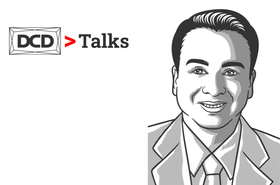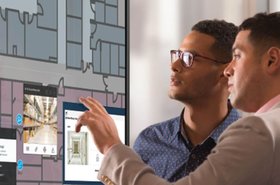Sadly, operating costs frequently seem to build up. Data centers are power vacuums, and the cost of maintaining this can be exponential.
According to Alpesh Saraiya, the senior director of the data center vertical offering management at Honeywell, this has only been exacerbated by the Covid-19 pandemic.
“We've been through this very aggressive growth spurt throughout the pandemic, and now coming out of it, we aren’t seeing any relenting or shortcoming of demand. So from that standpoint, we essentially have to manage [our facilities] in light of some of the economic, recessionary headwinds that we're seeing. So, as an industry, while we see the demand continuing, we also need to be agile in terms of having some optimization,” Saraiya explains.
On top of this, OpEx (operational expenditure) accounts for the majority of the lifetime value of the TCO (total cost of ownership). This differs depending on where you look for the statistic, but it's consistently north of 50 percent.
Because of this and the need for more and more facilities, optimization needs to be there from the very beginning.
“When we go out and build new data centers, we have to make sure that the managing and operating element is thought of and optimized way before the design decisions are made,” says Saraiya.
“It has to be at the very beginning of the process. In the past, this has sometimes been an afterthought, but we can no longer afford that because many things are at stake, including sustainability, and worker productivity. Now that some of the dynamics in the world are changing, including the energy crisis, we have to start actively thinking about it.”
The management and operations side of a data center is arguably one of the most complex. Many factors must be balanced and calibrated effectively, and as data centers get bigger and harder to manage, digitization is increasingly necessary.
“We have a good capability for assessing things thanks to the very digitized and sensor-using world that we live in. That's the first step: making sure that at the design phase we built in all of this sensory data acquisition. But at that point, all we have is a lot of data. So, how do we go and actually make some intelligent, informed decisions based on this?”
This is, of course, where software and analytics come into play. Whether they make automated decisions, or simply give the opportunity to a human decision-maker can vary. What is essential, is that cross-domain visibility.
“A lot of the time, we look at things on a very siloed basis in the business managers domain, in the product managers domain, or in the IT domain. But really, the grander challenges and benefits that we can expect going forward, with exceedingly high factors at stake, will need more of a holistic optimization.”
This is complicated by the many variables of different locations, different facilities, and the sheer quantity of data and information. But the fact is, until we have at least a rough cookie-cutter available, having widespread management of OpEx will be extremely difficult.
According to Saraiya, the trick to getting around this is: “Acknowledging the fact that different regions have different sustainability timelines, different environmental climate challenges, different resource challenges, but still, there has to be an overriding theme in order to tackle this problem to a meaningful extent.”





